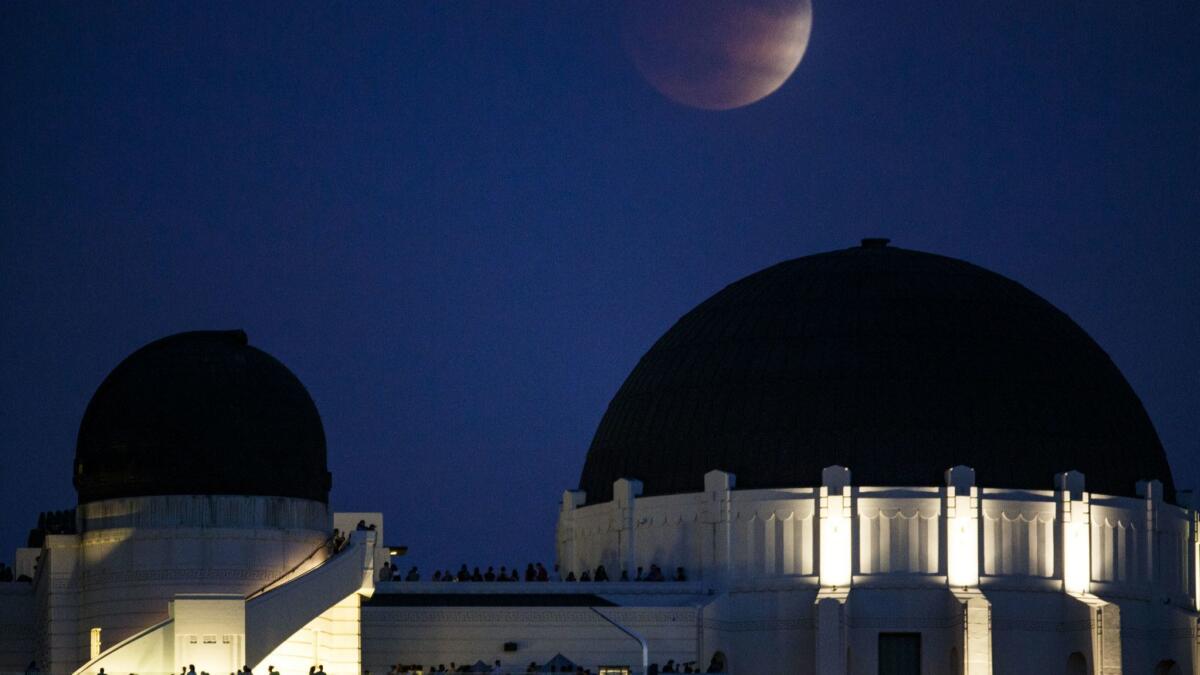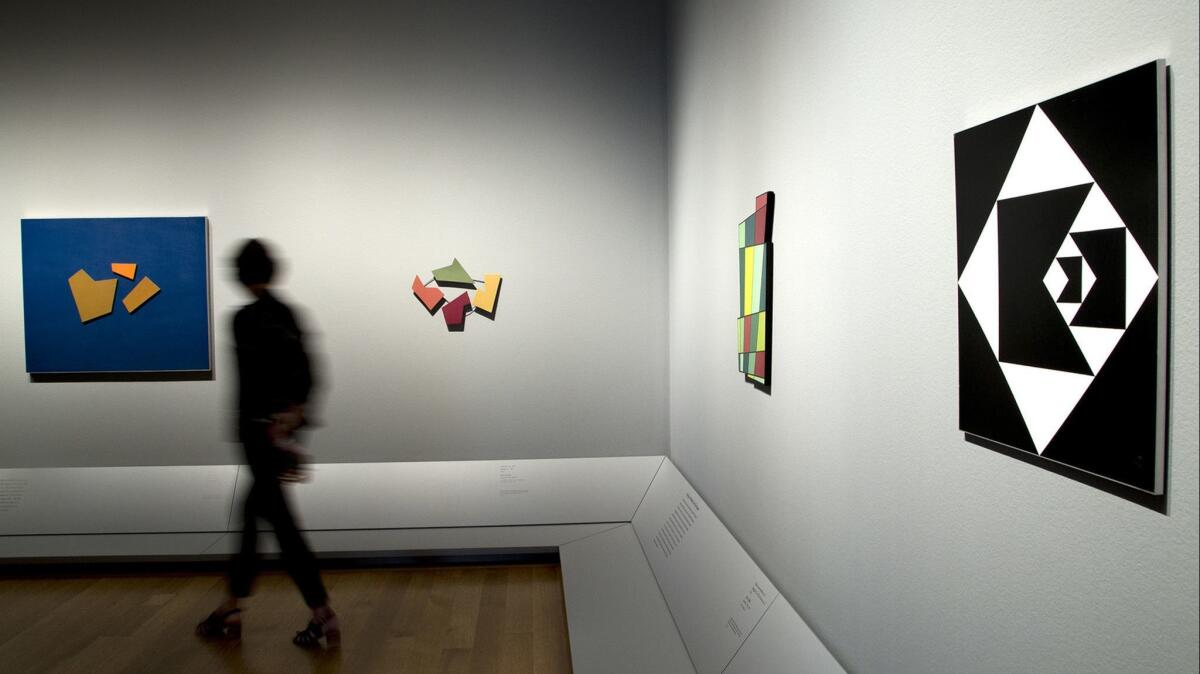The Getty picks a theme for Pacific Standard Time 2024: art and science

- Share via
Over the last eight years, the Getty-funded Pacific Standard Time exhibitions have tackled the art of Los Angeles and Latin America. Now the Getty is getting ready to launch a PST series for 2024 that will go beyond the world of fine art: “Pacific Standard Time: Art x Science x L.A.” will explore the intersections between art and science in Southern California.
“Science is a big part of Los Angeles,” said James Cuno, president of the J. Paul Getty Trust. “The establishment of the Natural History Museum, which opened in 1913, the founding of Caltech, the Griffith Observatory, the aerospace industry that came after the Second World War.”
The future PST will date from “Leonardo to the present,” Cuno added, referring to the Italian Renaissance painter who was also a scientist and inventor.
The Getty developed the “Art x Science x L.A.” theme with its planning partners, the Hammer Museum and the Los Angeles County Museum of Art. As part of the initiative, the Getty will expand participation to scientific institutions across Southern California.
“We’ve always had an interest in the intersection between art and science,” said Ed Krupp, director of the Griffith Observatory, who served as an early advisor on the new series.
ALSO: How the L.A. Phil centennial season delivered on the promise of unprecedented goods »
Krupp noted the often symbiotic relationship between the two subjects: the drawings that have recorded biological species over time, the renderings that serve as visualizations of abstract scientific ideas, and the fact that scientists and artists often share a profound commitment to probing new intellectual concepts.
“The actual facts — that is not science,” he said. “It’s the testing, the constant critical skeptical examination of what you think is true.”
And of course, there is science fiction, which weaves scientific innovation with literature and art: “There is a very clear thread between the growth of science fiction with Jules Verne and ultimately our landing on the moon,” Krupp said. “That’s people whose imaginations were fired.”
The exhibitions will touch on these intersections in connection with the scientific history of the region: the achievements of the Jet Propulsion Laboratory, which launched the spacecraft that produced the first images of another planet’s surface, and the discoveries made by Edwin Hubble at Mt. Wilson Observatory.
“Mt. Wilson Observatory, at the end of the 19th century, had the largest telescope in the world,” Krupp said. “The 100-inch reflector telescope was built up there. It was where Edwin Hubble made these observations of celestial objects known as nebulae. Hubble demonstrated how truly far away they were, and it started to change the architecture of the universe.”
The Getty’s series comes at a moment when skeptics, which include government leaders, publicly question scientific consensus on issues such as evolution, vaccination and the human role in climate change — in effect sowing doubt about established scientific fact.
“In an era in which scientific facts are disputed or ignored, we were certainly provoked by that,” Cuno said. (Not that attacks on science are anything new. In the 17th century, the Catholic Church charged astronomer Galileo Galilei with heresy for suggesting that Earth revolved around the sun.)
“It’s always a good time for critical thinking,” Krupp said. “It never hurts to spotlight the value of scientific inquiry.”
The first PST launched in fall 2011 and was titled “Pacific Standard Time: Art in L.A. 1945-1980.” A smaller PST on modern architecture followed in 2013. “Pacific Standard Time: LA/LA,” devoted to Latino and Latin American art, opened in fall 2017. Cuno said that for this iteration of PST, a greater focus will be placed on programming such as lectures and study programs to amplify what’s in the gallery.
The series will feature plenty of celebration too.
“It is, as we all know, the 50th anniversary of the moonshot,” Cuno said. “That’s when science was promoted as a challenge to be met. And with the Jet Propulsion Lab at Caltech, we are reminded of the continuing contributions of science to our understanding of the universe.”
As in the past, institutions around Southern California will be invited to apply for grants from the Getty for the purpose of researching, developing and staging exhibitions. Cuno declined to give an exact dollar figure but said it will be in keeping with past efforts. The Getty spent $16.3 million on the 2017 iteration of PST.
ALSO: Natural landscapes turned noxious in photography on view at Blum & Poe »

The application process for research grants will kick off later this year, and recipients will be announced in 2020. An implementation grant process will follow.
It will be a fitting year in which to focus on the intersection of art and science. It is in 2024 that Octavia Butler set her science fiction novel “Parable of the Sower,” about a California that has been ravaged by climate change.
[email protected] | Twitter: @cmonstah
More to Read
The biggest entertainment stories
Get our big stories about Hollywood, film, television, music, arts, culture and more right in your inbox as soon as they publish.
You may occasionally receive promotional content from the Los Angeles Times.











